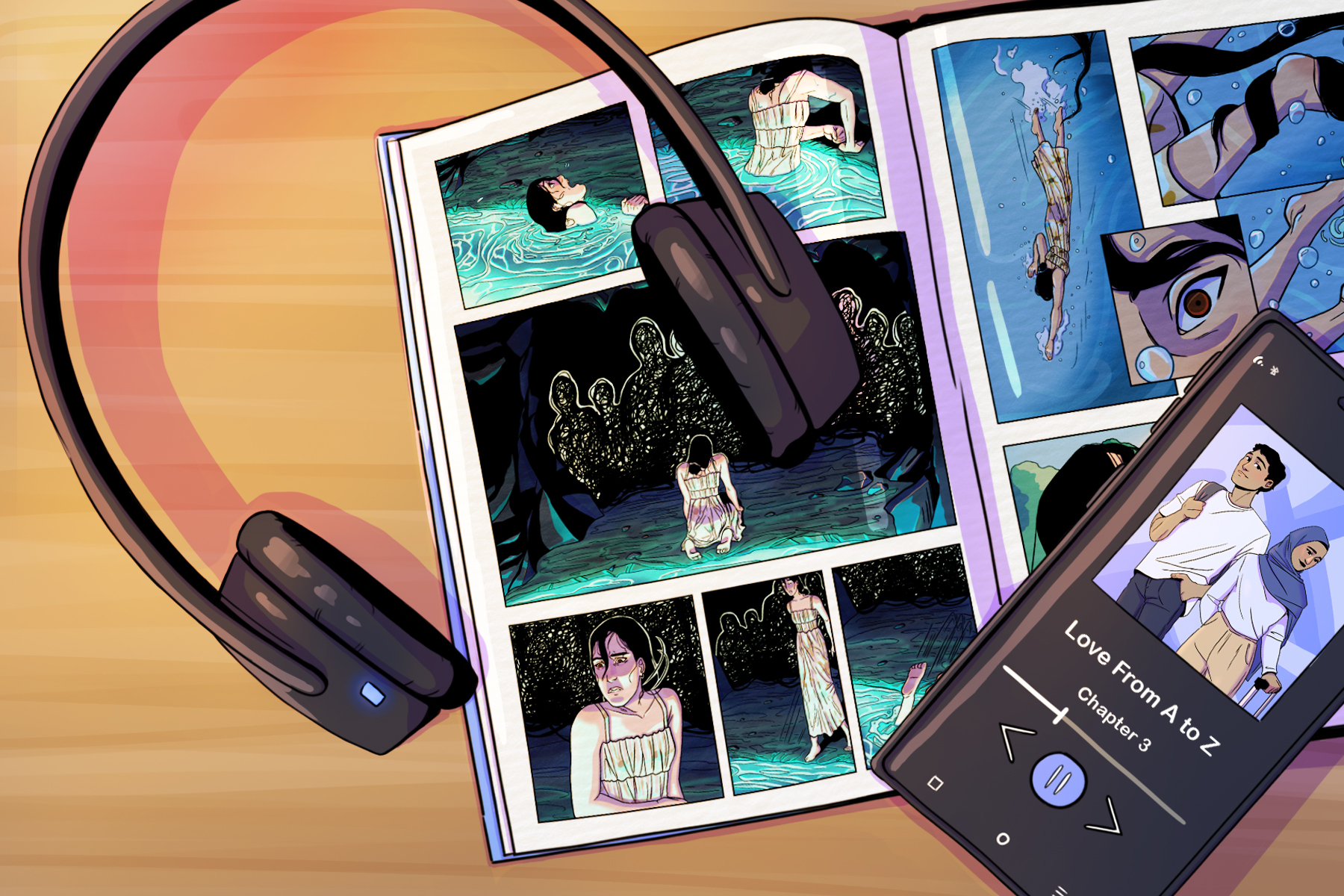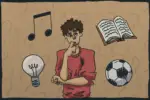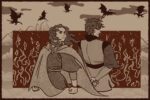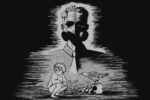Over the past decade or so, graphic novels and other non-traditional forms of reading have seen a surge in popularity. Despite this, many readers still feel reluctant to pick up books that do not conform to the mainstream novel format, often thinking that anything else does not “count” as reading.
Why do some people not believe all of these formats constitute “reading” and why are non-traditional forms of reading looked down upon?
The Vast and Vague World of Storytelling
Most of us have experienced the art of storytelling. From a young age, children are read picture books by their parents at night or told stories at school during reading time. As people grow older, they’re exposed to stories through chapter books, novels and even film or television. Stories are everywhere, in an abundance of formats. Although stories come in all shapes and sizes, most of them originate from the written word and are capable of being experienced through reading.
Does this mean every story experience can be described as reading? No, but it’s more complicated than you might think.
According to the Merriam-Webster dictionary, to read is “to learn from what one has seen or found in writing.” If a story is constructed from written words, it could be considered reading. Films, for example, are more visual than books and do not require most audiences to read, yet you can still read a film’s script or screenplay.
And although a screenplay isn’t a conventional “book,” think back to a time when you may have read a play by Shakespeare in school. If both screenplays and plays are written to be performed rather than read in the traditional sense, why are Shakespeare’s works considered “books,” while many would not say the same about highly praised screenplays? Already, the concept of a “book” is vague and muddled.
Novels, graphic novels, comics, audiobooks and scripts include words that can be read and interpreted by the audience. Even poems, which are normally shorter than novels, can be featured in anthology collections and are certainly distinct. Therefore, it seems the question of “Is it a book?” stems from the idea that books are the same as novels, which is certainly far from the truth.
Rather than making the world of literature more complicated than it already is, the first solution to embracing all readable formats is just a matter of thinking about such works by their simplest definition: as books.
Absorbing the Details
Less traditional forms of reading, such as graphic novels and audiobooks, often get a bad reputation. Many people claim that reading anything other than a novel is “not really” reading, though those who say this are usually not avid readers themselves.
Compared to those who are skeptical of less conventional ways of reading, avid readers seem to hold an opposite perspective. “If you’ve never read a graphic novel before, it’s easy to feel a bit left out in the online book community, since they’re so popular here,” said Emma from Book Break, a YouTube channel run by Macmillan Children’s Publishing. “Before I ever read a graphic novel, I thought of them like comic books, that they all had to be about superheroes. But I’ve read a lot of them now and I absolutely loved them! I find them quite accessible and in a wide range of genres, perfect for any kind of reader.”
Over the past 20 years, graphic novelists have found a way to take their stories to a new level of complexity. The relationship between the words and pictures in today’s acclaimed graphic novels is more complex than ever before, with narrative responsibility constantly shifting between the writer and the reader.
Fortunately, parents and teachers are now learning that graphic novels can contain higher-level vocabulary words within the same age range as similar print-only books. They are also great for visual learners and can convey information while strengthening visual and verbal comprehension skills. “In the past, parents and teachers have had a hierarchy of reading; they saw picture books as lower forms of reading,” said award-winning graphic novelist Gene Luen Yang. “Comic books and graphic novels were usually left out of the equation entirely, or considered a stepping stone between children’s picture books and full-length novels, and that you wouldn’t need that stepping stone if you were smart enough.”
Yang’s graphic novel “American Born Chinese” follows three separate yet intertwining stories conveying Chinese culture’s past and present. It became the first graphic novel to be nominated for a National Book Award and the first to win the American Library Association’s Printz Award. “American Born Chinese” is now among the most powerful books in children’s literature, and it never would have come to fruition if it had not been for Yang’s persistent love of graphic novels, which had been discouraged by his parents and teachers since grade school.
In a TED talk from 2018 where he discussed just how impactful visual books can be for a young reader, Yang expressed the value of using graphic novels in the classroom. “Unlike entertainment such as film or video games, comics and graphic novels are permanent. Past, present and future all sit side by side on a page, and the rate of information follow is firmly in the hands of the reader,” he said. “They can go back and read a passage however slow or fast they want, so the entertainment stays the same but more absorption and learning is achieved.” In short, graphic novels allow the audience to control how the story is perceived, and how the reader absorbs the information. Much like traditional novels, graphic novels allow the reader to connect with the story in their own way, through interpreting the information on the page.
Adults often believe that graphic novels can’t be considered literature because they rely upon imagery and may appear “childish,” but the book medium is constantly changing. Both traditional and graphic novels can still be compared in terms of character development, plot arcs and world-building, among other basic story structures.
There’s no denying the variety of graphic novel genres and their accolades, either. Just like traditional novels, graphic ones can fit into any genre or age category, such as young adult fantasy or autobiographical memoirs. In many universities around the world today, critically acclaimed graphic novels such as Art Spiegelman’s “Maus” and Marjane Satrapi’s “Persepolis” are taught in literature classes and are notable for their impactful perspective on experiences during times of real-world conflicts.
Reading Is Reading
For audiences of all ages, reading can be both an engaging and educational experience, whether or not the learning occurs intentionally. Reading of any kind, and especially when it comes to graphic novels, can stimulate the reader’s thinking skills and lead to a better acceptance of general reading over time. As mentioned by Yang, graphic novels and other non-traditional forms of reading can serve as a stepping stone into the world of literature. This applies to young and older readers alike.
“Just like traditional novels, graphic novels have exciting and complex plots, characters, and conflicts,” said a representative from Scholastic, in an article detailing how graphic novels can help improve one’s literacy skills and build a healthy relationship with reading. “The plots have twists and turns. Characters are developed and dynamic. Conflicts are presented, unwound, and resolved like they are in other texts. The only difference is that graphic novels have more images to support the development.”
Similarly, traditional and graphic novels provide imagery based on the creator’s perspective. Although prose novels rely on words to describe the author’s story through character reactions and setting descriptions, graphic novels rely on art to convey the same concepts. Most commonly, graphic novels will show settings and the characters’ emotions, while novels will describe such things with a small set of words. Both techniques are limited, but in a good way; prose and pictures allow the audience to take what the author has provided and use their imagination to put together the rest of the story.
Like any form of storytelling, graphic novels and other less conventional reading formats tell a story the way the author intended on conveying it to the audience. Any form of reading a book can be considered reading as long as it allows the audience to absorb the story as it was intended to be enjoyed.
Reading is meant to be enjoyed, after all, and sometimes it’s great to take a break from text-heavy books and read something more visually inspiring. While you don’t have to devote all of your reading time to graphic novels, there’s no harm or shame in picking one up for yourself if you’re interested.
There’s nothing wrong with encouraging young readers to read outside their comfort zone or select more challenging materials, but no one should feel the need to exclude graphic novels from their bookshelves. By educating people on the upsides of graphic novels, the reading choices of children and older readers will be increasingly validated for years to come.

















